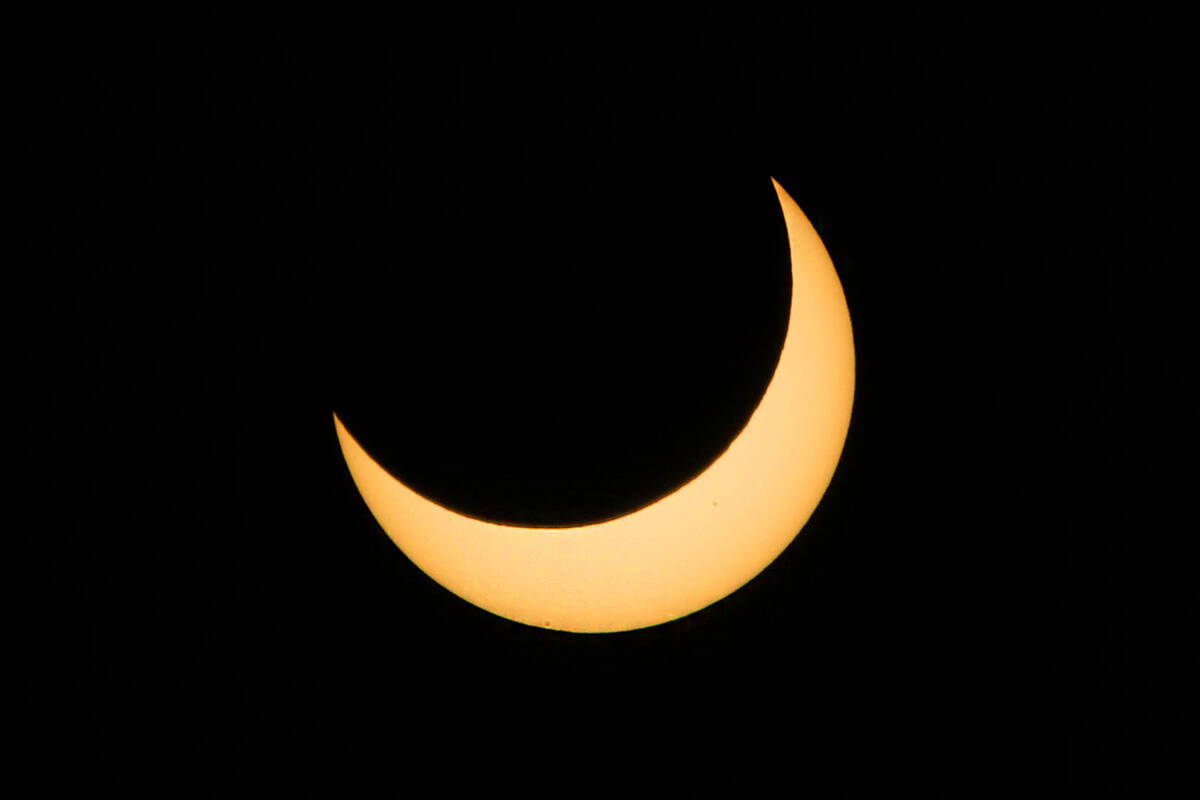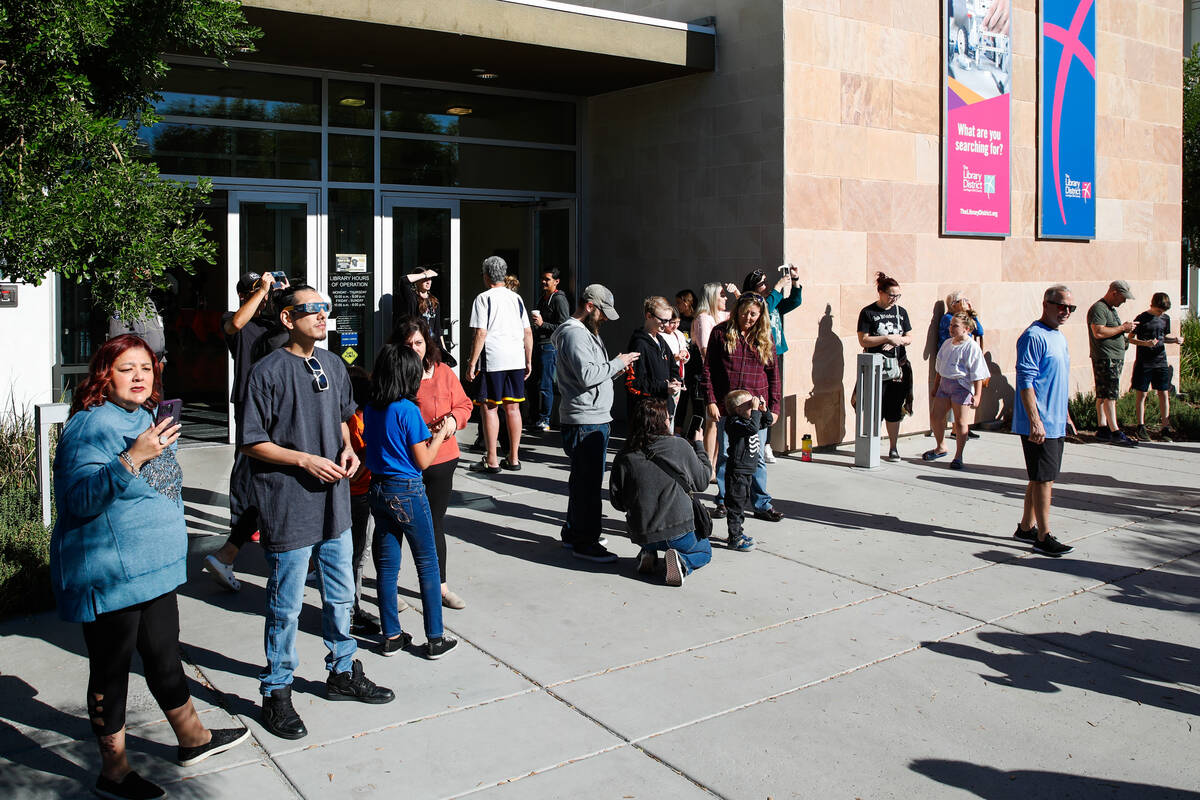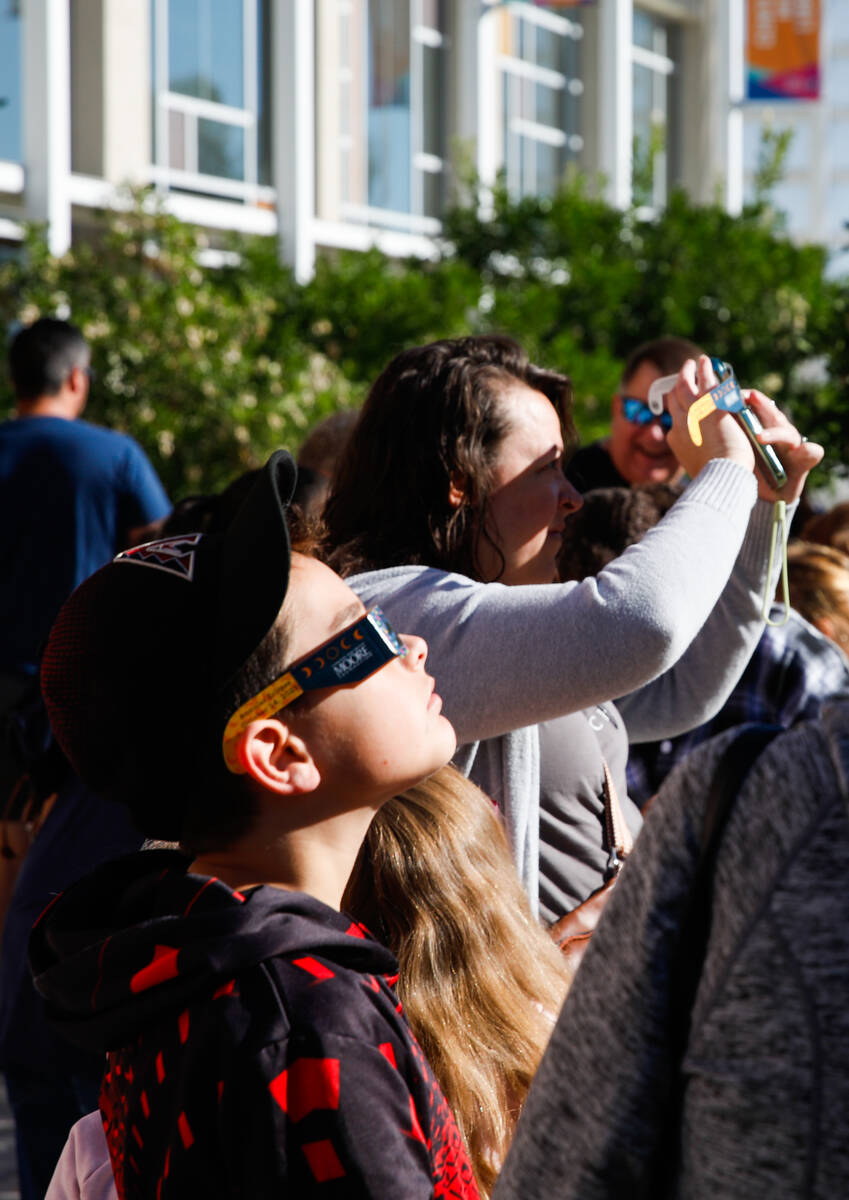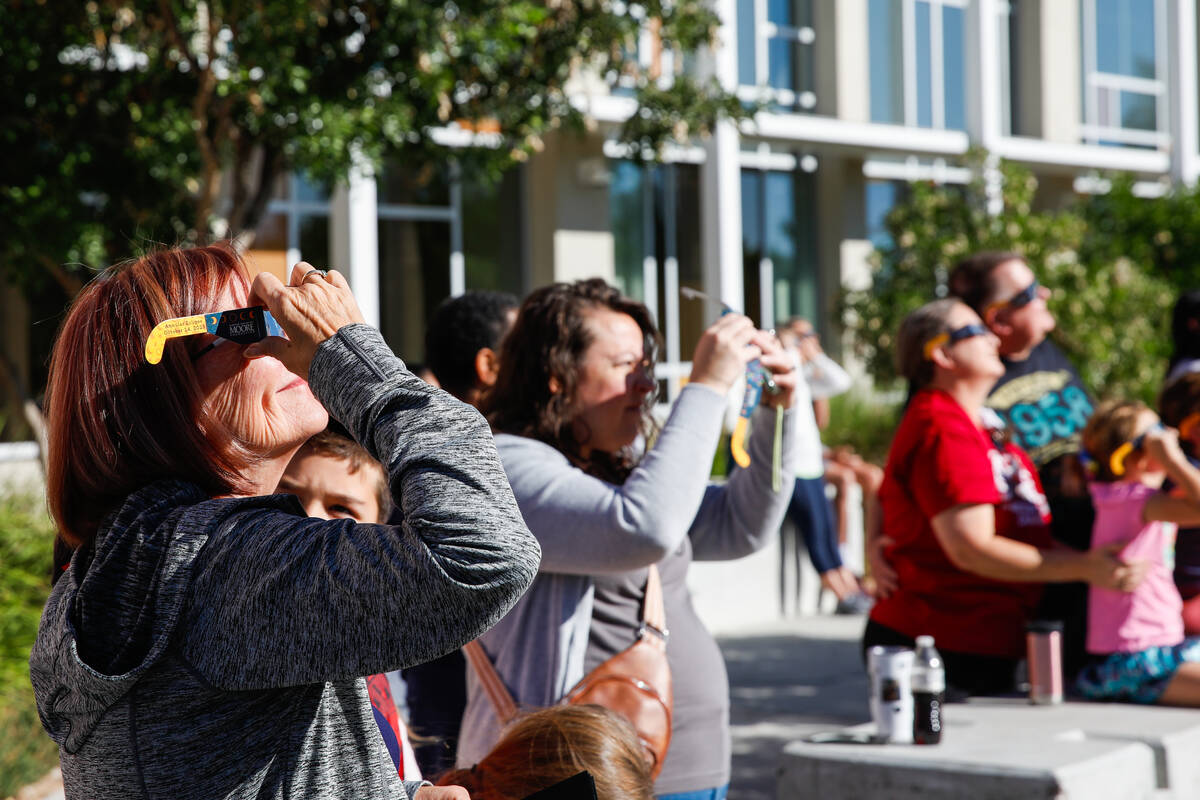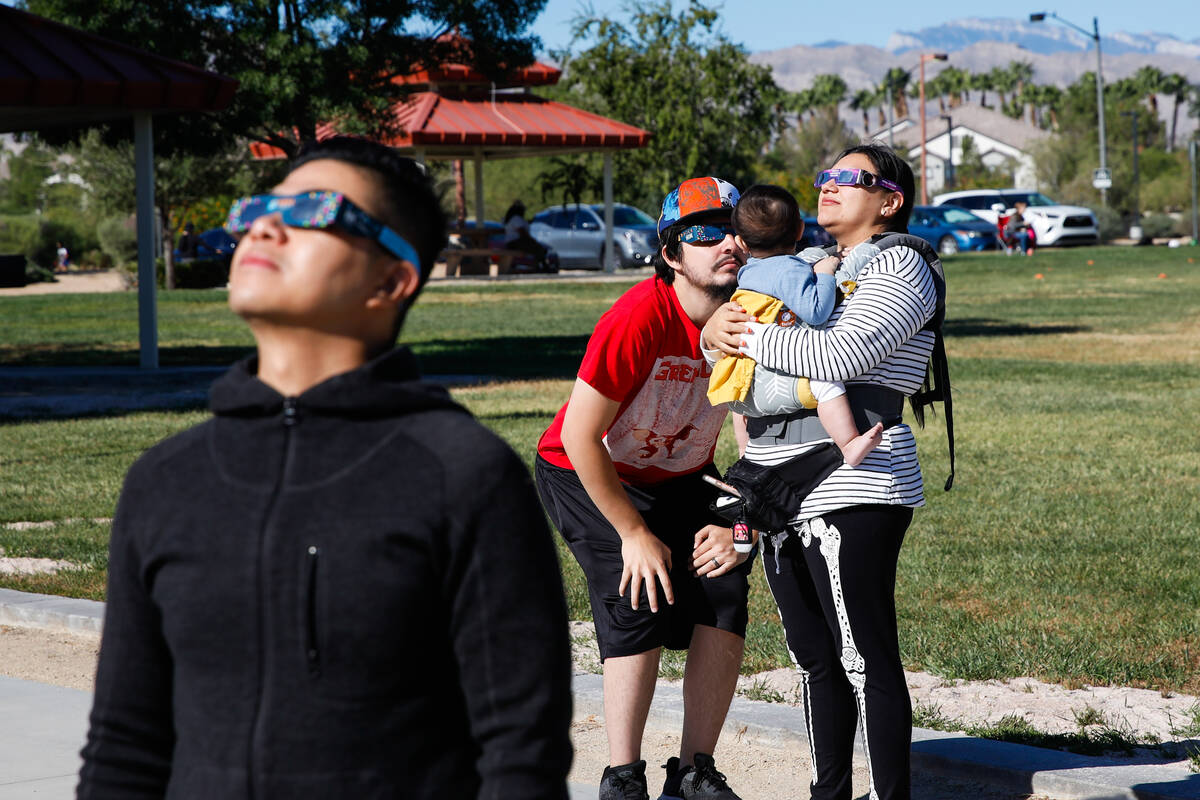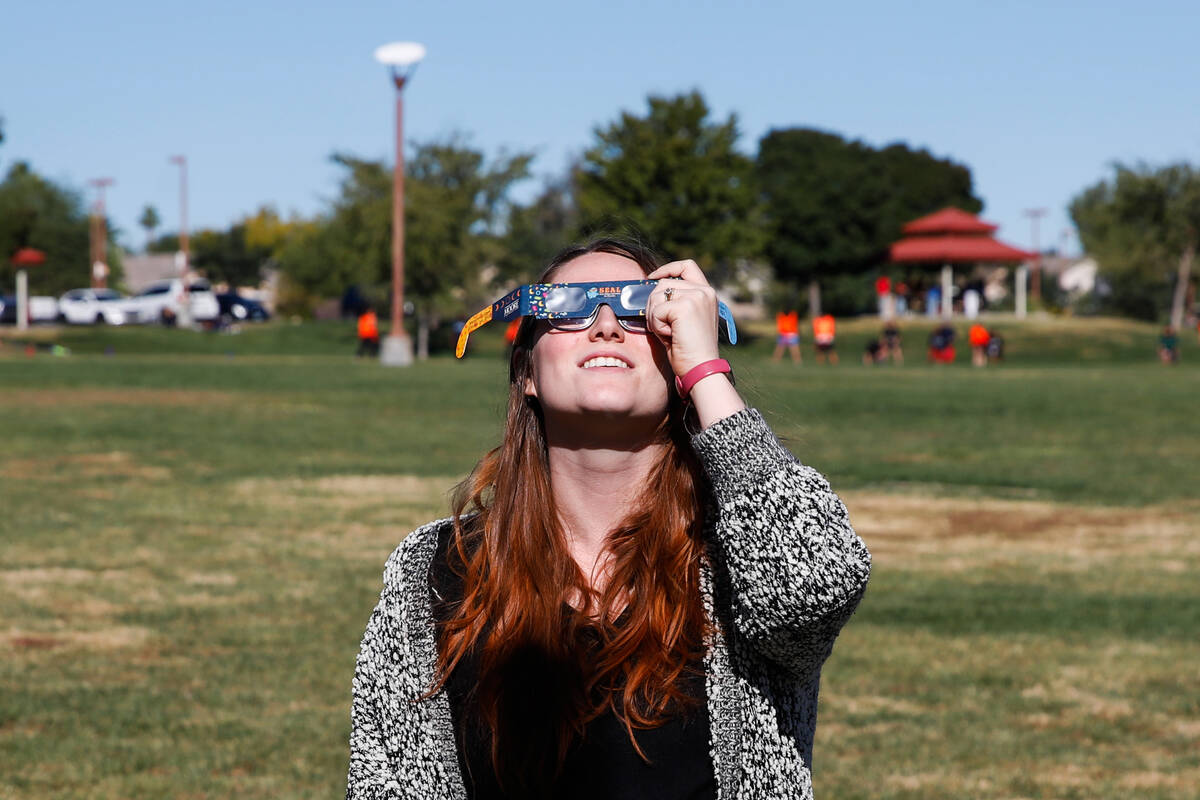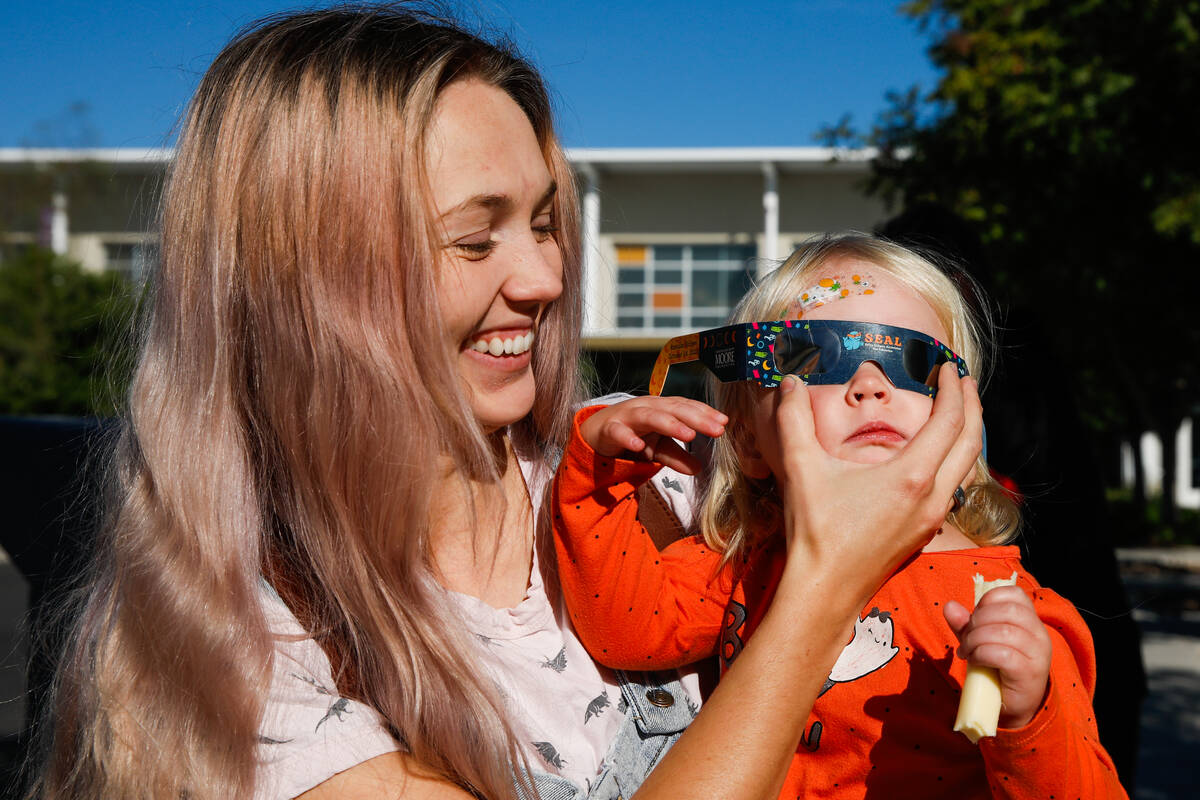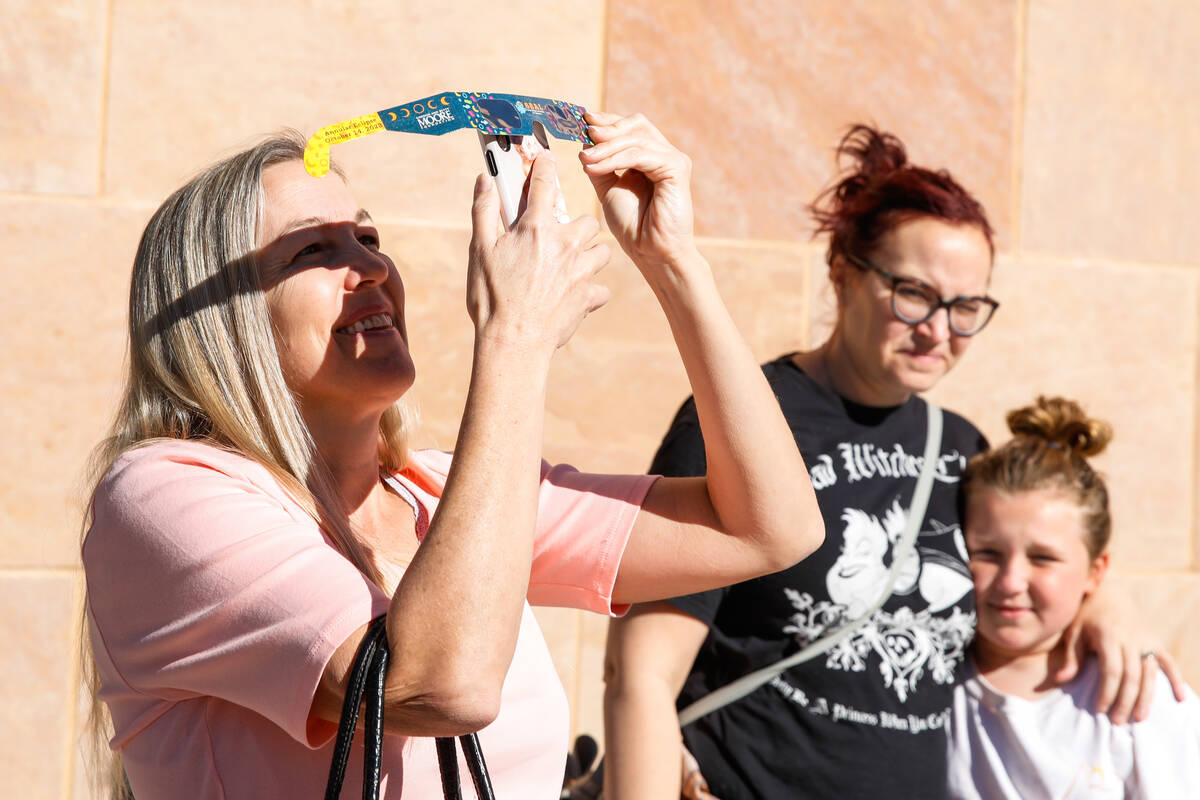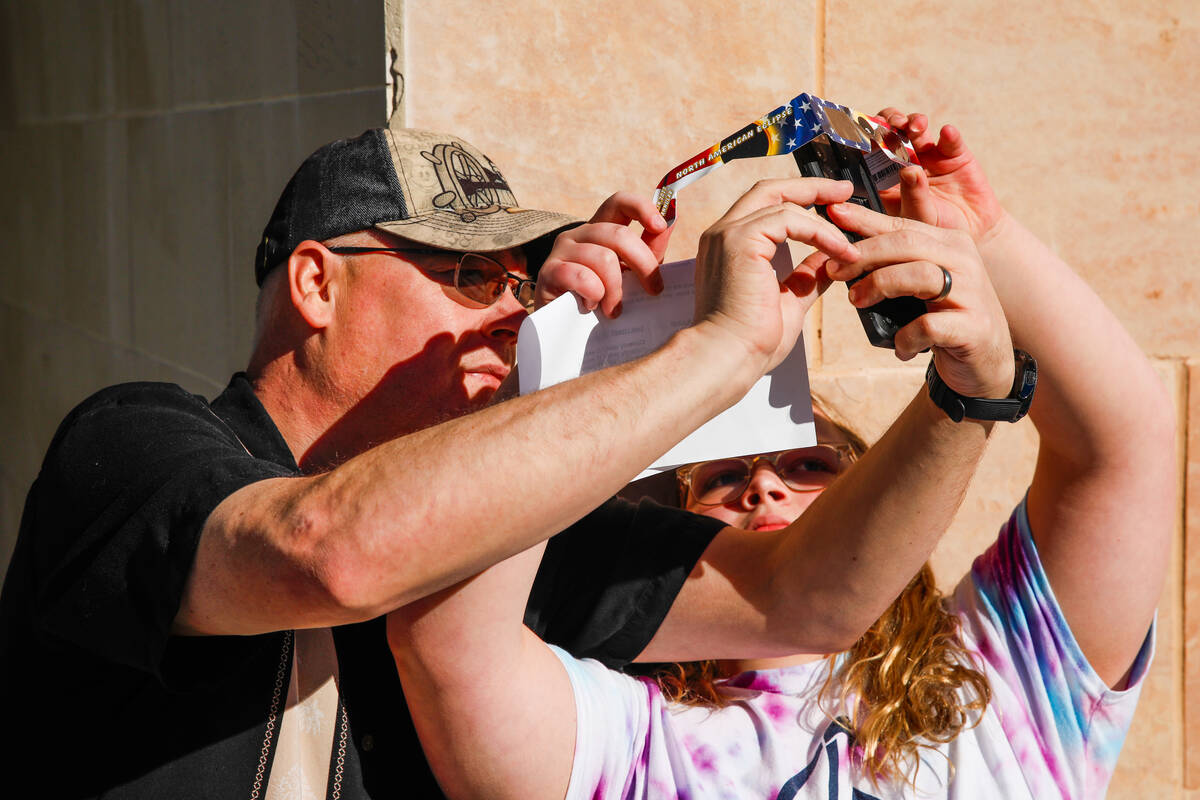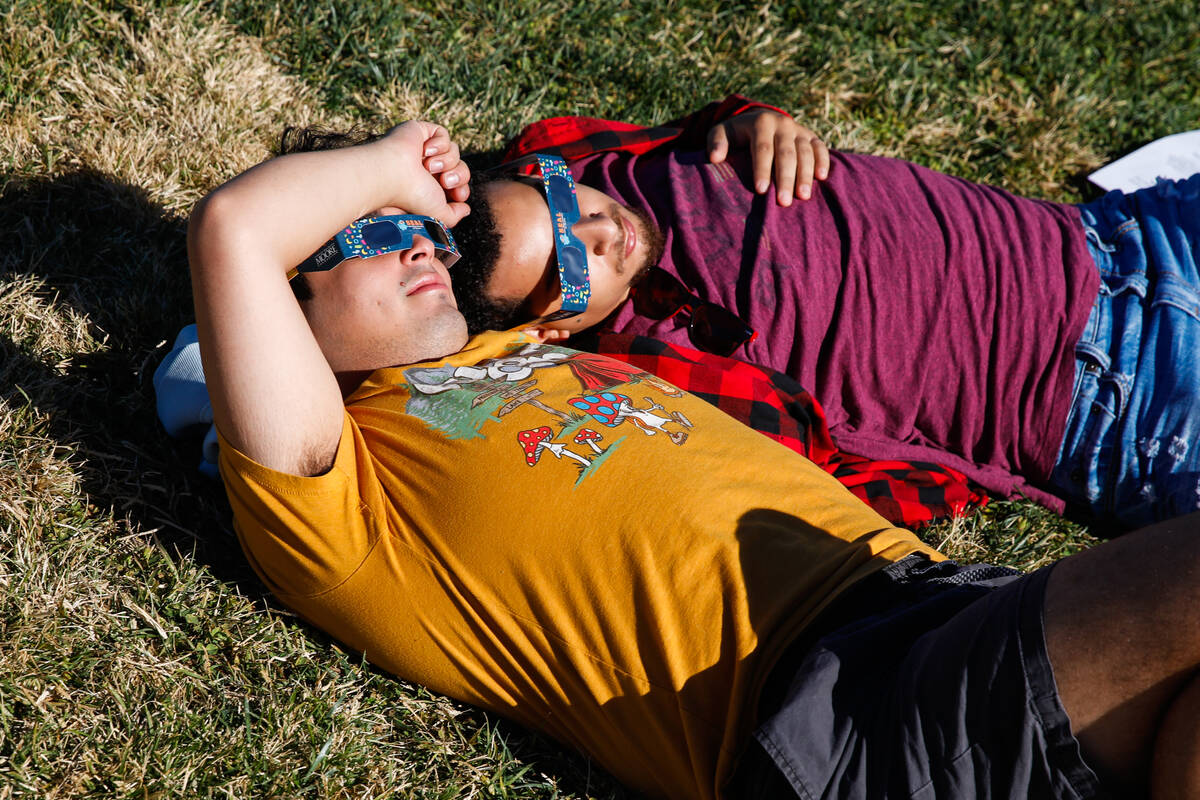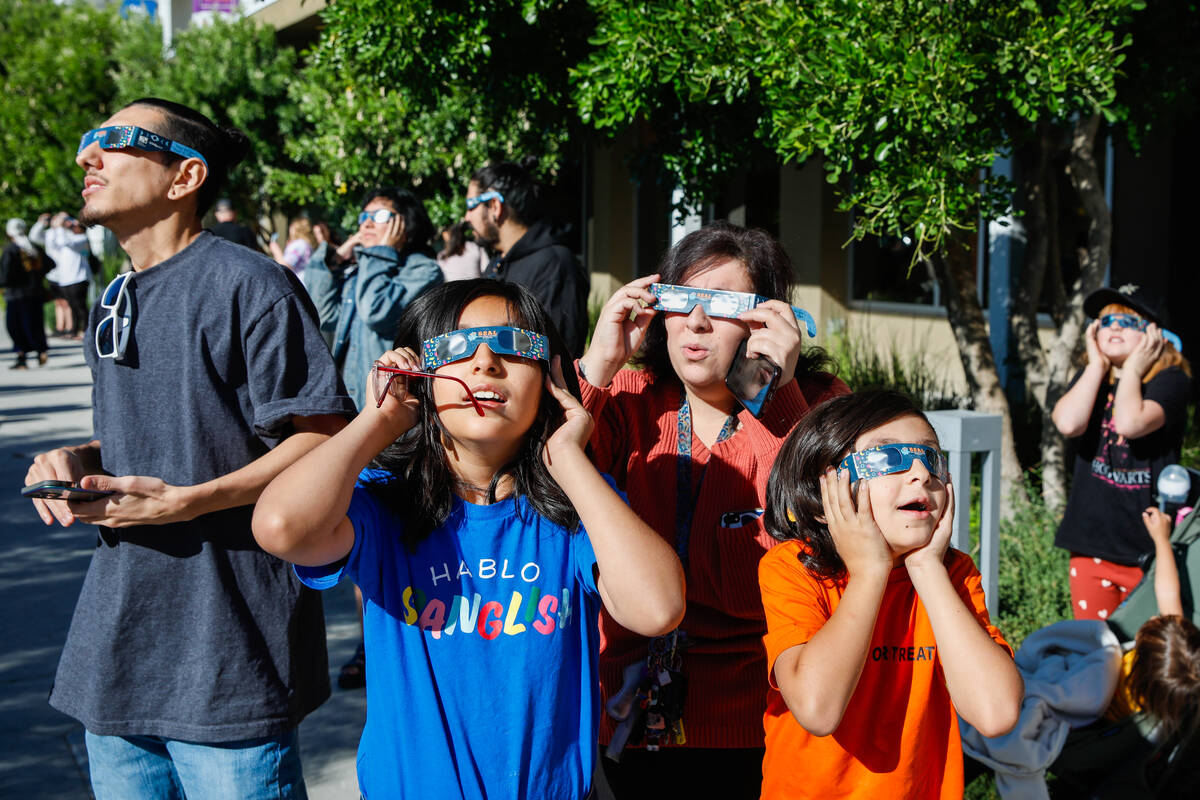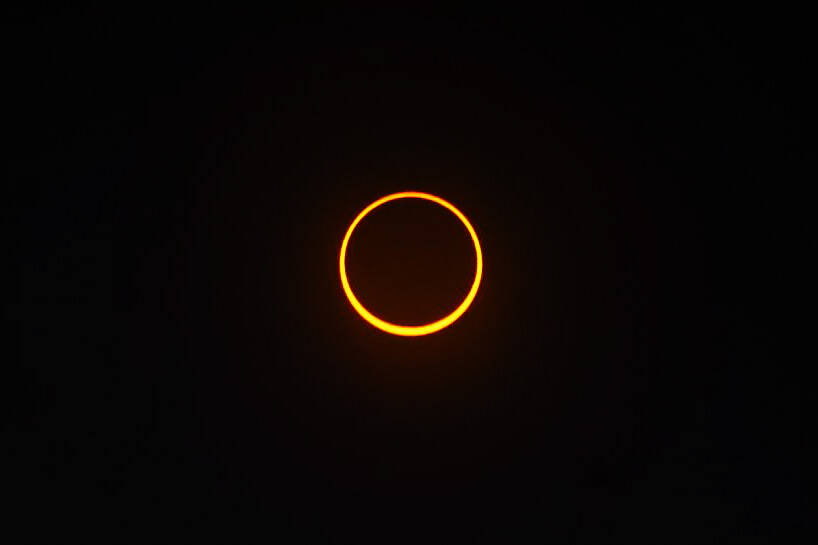‘Awesome to see’: Hundreds lined up for chance to see rare annular eclipse — PHOTOS
Interest in viewing Saturday morning’s annular eclipse was so high that the staff at the Centennial Hills Library in northwest Las Vegas soon ran out of their supply of 200 safety glasses.
“I expected to get a little less than what we got,” said Robbie DeBuff, 52, branch manager of the library. “I would say that say probably close to 350, 400 people showed up today.”
A long line of adults and kids started forming about 9 a.m., and the doors opened at 9:30 a.m., about 10 minutes after the moon had passed through the middle of the sun to show its brightly lit “ring of fire,” but the partial eclipse remained viewable for some time afterwards.
Smiles were all around for those lucky enough to receive the special solar viewing glasses and see the two spheres meet without damaging their vision.
“It’s such as rare event it’s something you should definitely see at least once in your life,” said Devin Ricker, 31, who drove with his companion Leilani Canapino, 29, all the way from Henderson to the library.
“I think it’s awesome,” Canapino said. “I’ve never experienced this, being able to see two things collide. It’s really cool.”
“Honestly, it’s really awesome to see just like, two big things, the sun and the moon coming together,” said Pretti Quintro, 16. “I really don’t get to see a lot of things like this in nature.”
“You’re not going to see it very often, so it’s something, like, you want to experience this,” said Elizabeth Diaz, 39, with her children Alex, 3, and Andres, 4. “So you need to talk about it with your kids and we came and brought them.”
Susan Cunningham, 33, read about the event on Facebook and told her kids Whitman, 6, Magnolia, 4, and Albus, 9, they were going to get up early to be in line for the solar glasses.
“I think it’s fantastic,” Cunningham said after removing her glasses.
“It think it looks like a ring on a finger or like a helmet,” said Whitman, an imaginative sort who was hopping up and down excitedly after seeing the eclipse. “I see the sun. It turns red!”
Nevada was among several Western states within the “path of annularity” where the moon in its orbit passed between the sun and Earth orbits for an annular eclipse, meaning the moon does not cover the sun, unlike a total eclipse, according to the National Oceanic and Space Administration.
But the moon did achieve “annularity” by passing in the middle of the sun, creating like a black hole in the view of the star, with a ring of light around it for a few minutes.
“The moon will then continue passing across the sun’s face for about an hour and 20 minutes, producing another partial eclipse phase,” according to NASA. “The moon continues to move until it no longer overlaps the sun’s disk. The eclipse is over.”
A total solar eclipse is expected to take place in view from the United States pretty soon — on April 8, 2024, when the “moon passes between the sun and Earth, completely blocking the face of the sun,” NASA states. “The sky will darken as if it were dawn or dusk.”
The next annular eclipse is set to happen in 2041 and the next total eclipse after 2024, viewable in parts of the United States, won’t arrive until 2044, according to the National Park Service.
Contact Jeff Burbank at jburbank@reviewjournal.com or 702-383-0382. Follow him @JeffBurbank2 on X.



